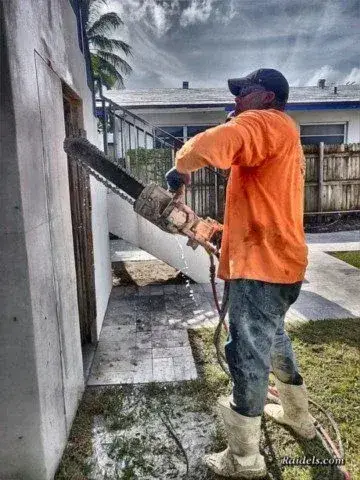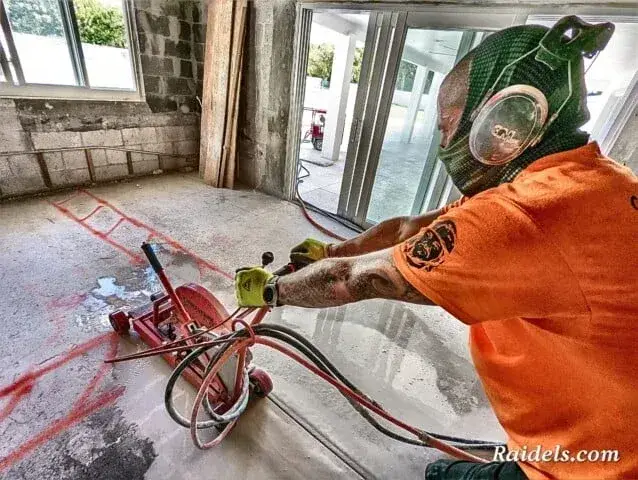When it comes to precision cutting in construction and renovation projects, the hydraulic chainsaw stands out as a tool of choice, particularly for creating door openings without overcuts. Overcuts can compromise the structural integrity and aesthetic appeal of a project, making it crucial to employ the right techniques and tools. In this comprehensive guide, we’ll explore how to master the art of cutting door openings using a hydraulic chainsaw, ensuring clean, precise cuts every time.
Understanding the Basics of Hydraulic Chainsaws
Advantages of Using a Hydraulic Chainsaw
Hydraulic chainsaws are known for their power, precision, and ease of handling. Unlike traditional chainsaws, they provide greater control, allowing for accurate cuts without the risk of overcutting. This precision is essential in tasks like cutting door openings where every inch matters. For insights into the latest cutting technologies, Concrete Cutting 101: Essential Tools and Techniques Revealed offers an in-depth look.
Setting Up Your Hydraulic Chainsaw
Proper setup is key to achieving optimal results with a hydraulic chainsaw. This involves checking the chain tension, ensuring the hydraulic fluid levels are correct, and familiarizing yourself with the saw’s safety features. A well-set-up chainsaw is not only more efficient but also safer to use.
Preparing for the Cut
Marking the Door Opening
Before cutting, it’s crucial to accurately mark the area where the door opening will be. Use a chalk line or marker to outline the dimensions, ensuring that the lines are level and straight. This step is vital to avoid any overcuts.
Safety Precautions
Always wear appropriate safety gear, including goggles, gloves, and ear protection. Ensure that the work area is clear of obstructions and that you have a firm footing. Safety in concrete cutting is paramount, as detailed in Safety Measures in Concrete Cutting.
The Cutting Process
Starting the Cut
Begin by making a plunge cut at a corner of the marked door opening. This initial cut should be done carefully, aligning the chainsaw blade precisely with the marked line.
Maintaining Control Throughout the Cut
As you cut along the marked line, maintain a steady pace and keep the chainsaw aligned. The hydraulic chainsaw’s design allows for better control, reducing the likelihood of overcuts. For a deeper understanding of effective cutting techniques, The Mighty Blade: Unveiling the Secrets of Effective Concrete Cutting is an excellent resource.
Finishing the Cut
Avoiding Overcuts at Corners
The corners are where overcuts are most likely to occur. As you approach a corner, slow down and make a precise pivot with the chainsaw to change direction. This careful maneuvering is crucial to achieve a clean, overcut-free corner.
Inspecting the Cut
Once the cutting is complete, inspect the door opening for any irregularities. If minor adjustments are needed, use a hand chisel or smaller cutting tool for refinement.
Real-World Applications
Professional Use in Construction
In professional construction settings, the ability to cut door openings without overcuts is highly valued. It saves time and materials, and ensures the structural integrity of the building. For an insight into innovative construction techniques, Building Paradise: Exploring Miami’s Architectural Marvels offers a fascinating perspective.
DIY Home Renovation Projects
For DIY enthusiasts, mastering the hydraulic chainsaw for door openings can elevate the quality of home renovation projects. It allows for a more professional finish, adding value to the property.
Final Thoughts
Mastering the hydraulic chainsaw for cutting door openings without overcuts is a valuable skill in both professional construction and DIY projects. By following the steps outlined in this guide, you can achieve precise, clean cuts, enhancing the quality of your work. Whether you’re a seasoned professional or a DIY enthusiast, these techniques will help you tackle your next project with confidence.
Invitation for Feedback
Have you tried cutting a door opening with a hydraulic chainsaw? Share your experiences and tips in the comments below. Your insights can help others refine their techniques.


